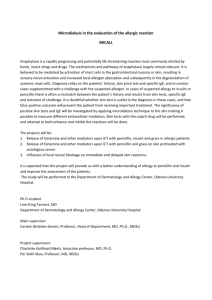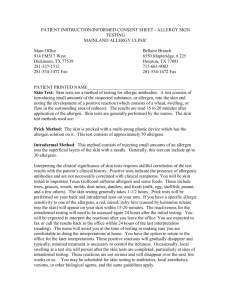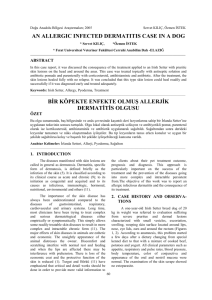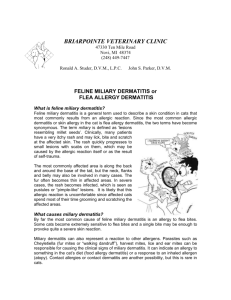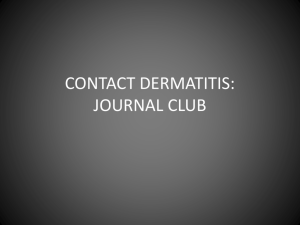ACD
advertisement
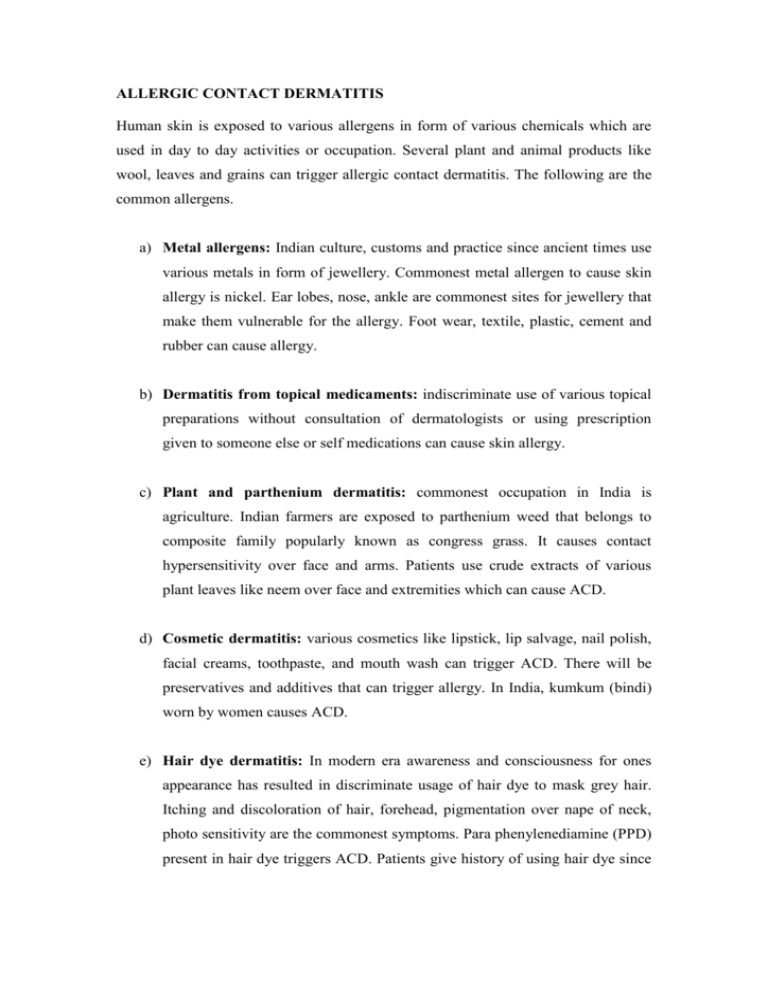
ALLERGIC CONTACT DERMATITIS Human skin is exposed to various allergens in form of various chemicals which are used in day to day activities or occupation. Several plant and animal products like wool, leaves and grains can trigger allergic contact dermatitis. The following are the common allergens. a) Metal allergens: Indian culture, customs and practice since ancient times use various metals in form of jewellery. Commonest metal allergen to cause skin allergy is nickel. Ear lobes, nose, ankle are commonest sites for jewellery that make them vulnerable for the allergy. Foot wear, textile, plastic, cement and rubber can cause allergy. b) Dermatitis from topical medicaments: indiscriminate use of various topical preparations without consultation of dermatologists or using prescription given to someone else or self medications can cause skin allergy. c) Plant and parthenium dermatitis: commonest occupation in India is agriculture. Indian farmers are exposed to parthenium weed that belongs to composite family popularly known as congress grass. It causes contact hypersensitivity over face and arms. Patients use crude extracts of various plant leaves like neem over face and extremities which can cause ACD. d) Cosmetic dermatitis: various cosmetics like lipstick, lip salvage, nail polish, facial creams, toothpaste, and mouth wash can trigger ACD. There will be preservatives and additives that can trigger allergy. In India, kumkum (bindi) worn by women causes ACD. e) Hair dye dermatitis: In modern era awareness and consciousness for ones appearance has resulted in discriminate usage of hair dye to mask grey hair. Itching and discoloration of hair, forehead, pigmentation over nape of neck, photo sensitivity are the commonest symptoms. Para phenylenediamine (PPD) present in hair dye triggers ACD. Patients give history of using hair dye since several years before these symptoms. Usually patients will not be awareof this allergy as it takes a very long time to manifest. f) Sun light allergy: Redness, burning sensation over the face on exposure to sunlight and sense of relief when one goes to shade is characteristic of sunlight allergy. These patients have to cover their forearms, wear full sleeved clothing and use umbrellas to avoid sunlight. Sunscreens are very helpful. However, they have to consult their nearest dermatologist who would be helpful to advice regarding the appropriate sunscreens for their skin. Preventive measures: Consult your nearest dermatologist, who can suggest appropriate sunscreens, moisturizers, cosmetics that can beautify skin without any adverse reactions. Do not use medicines advised to friends or relatives. Patch testing: ACD is cured by avoiding the causative allergen. To identify the suspected allergen, dermatologist will advice a procedure called patch testing. Suspected set of allergens are applied over the patient’s back. They are removed after 48hours and reading is taken. 2nd reading is taken after 96hours. If patient is allergic to any of the applied allergen there will be a positive reaction. So, allergen is identified and there by patient can avoid them.






